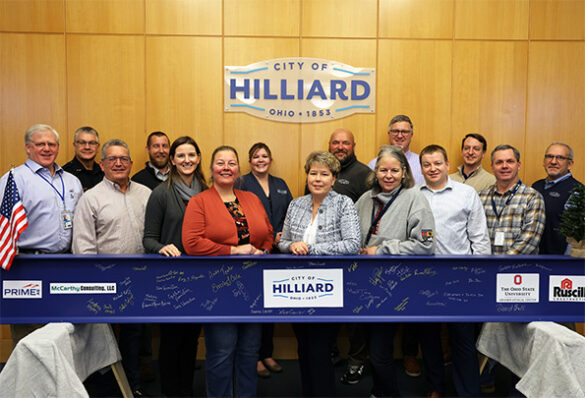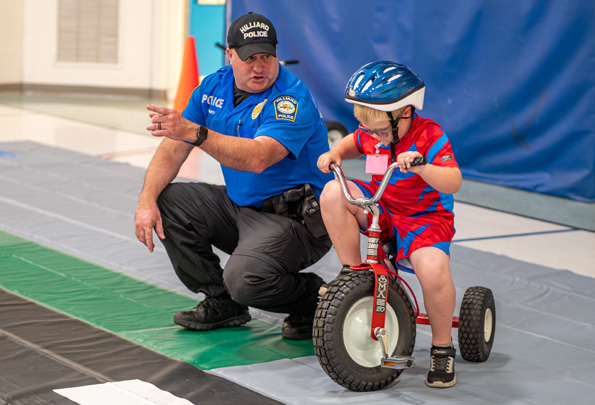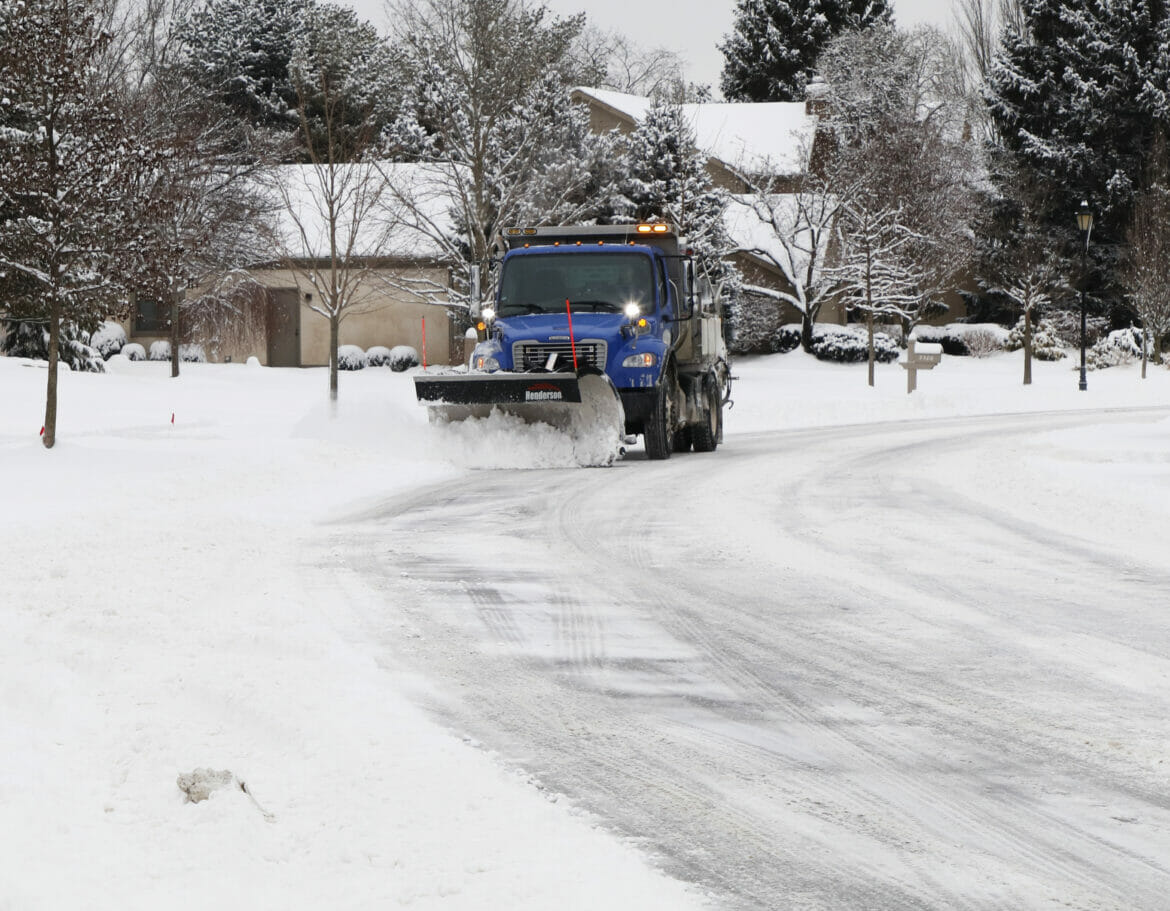It’s 3 a.m. on a frigid January morning in Hilliard, and 12 City employees get the call to prepare for significant snow and ice removal during an upcoming storm.
For the next 12 hours, they’ll put everything else on hold to ensure the roads are clear and safe for the public. These “snow warriors” are public works first responders, working behind-the-scenes with a heart for service to their community.
“Not everyone is cut out for public works,” said Larry Lester, Operations Director. “Our team members make themselves available and sacrifice family and recreational time, knowing that when the phone rings, it’s time to mobilize and get things done.”
Lester leads a team of 38 people in Operations, with 28 Maintenance Technicians who are responsible for plowing 130 center-line miles and 300-lane miles within the City’s corporate limits.
Snow and ice control is a three-step process – planning, staging, and mobilization – that starts well before any precipitation hits the ground.
“We house about 2,400 tons of salt and 15,000 gallons of brine, which we fill in the summer to last us through a typical winter season,” Lester said. “We have around 40 City trucks we can send out that are prepped days before a
storm hits.”
According to the City’s Snow and Ice Control Plan, the priority of service starts with major arterial roads, followed by minor arterials, then secondary streets, cul-de-sacs and alleys, and – finally – parking lots, sidewalks, and
City buildings.
“We pride ourselves in our quick response time,” Lester said. “We can mobilize a crew for a staged shift in about an hour and have drivers in, trucks started, ready to go within
that time.”
The City is divided into four quadrants for the purpose of snow and ice control, which helps prioritize need in different areas. Supervisors and crew leaders go out for “spotting” to monitor variations in road conditions and assess their needs.
“Road conditions may vary from one quadrant to the other, and we’re always trying to be as efficient as possible,” Lester said. “We’re also implementing surface temperature sensors on our trucks that will help us strategize even more in the future.”
On average, the City responds to around 12 to 15 snow and ice events a year, with about half of those being measurable accumulation. Lester said the use of technology and weather apps aid in preparation, but with the unpredictable nature of winter storms, it’s often “all-hands-on-deck” on any
given day.
“When it’s time to respond to any emergency, we drop everything we’re doing and respond,” Lester said. “Our people come in and work continuously in rotating 12-hour shifts until the roads are clear and safe. Then, we can send them home.”
Lester expects a harsher winter compared to recent years. He says his entire team of “snow warriors” considers it an honor to serve their community in this way.
“We have talented people on our team who respond to so many things, and it comes down to being flexible, resourceful, adaptable, and willing to jump in anytime the need is there,” Lester said.











